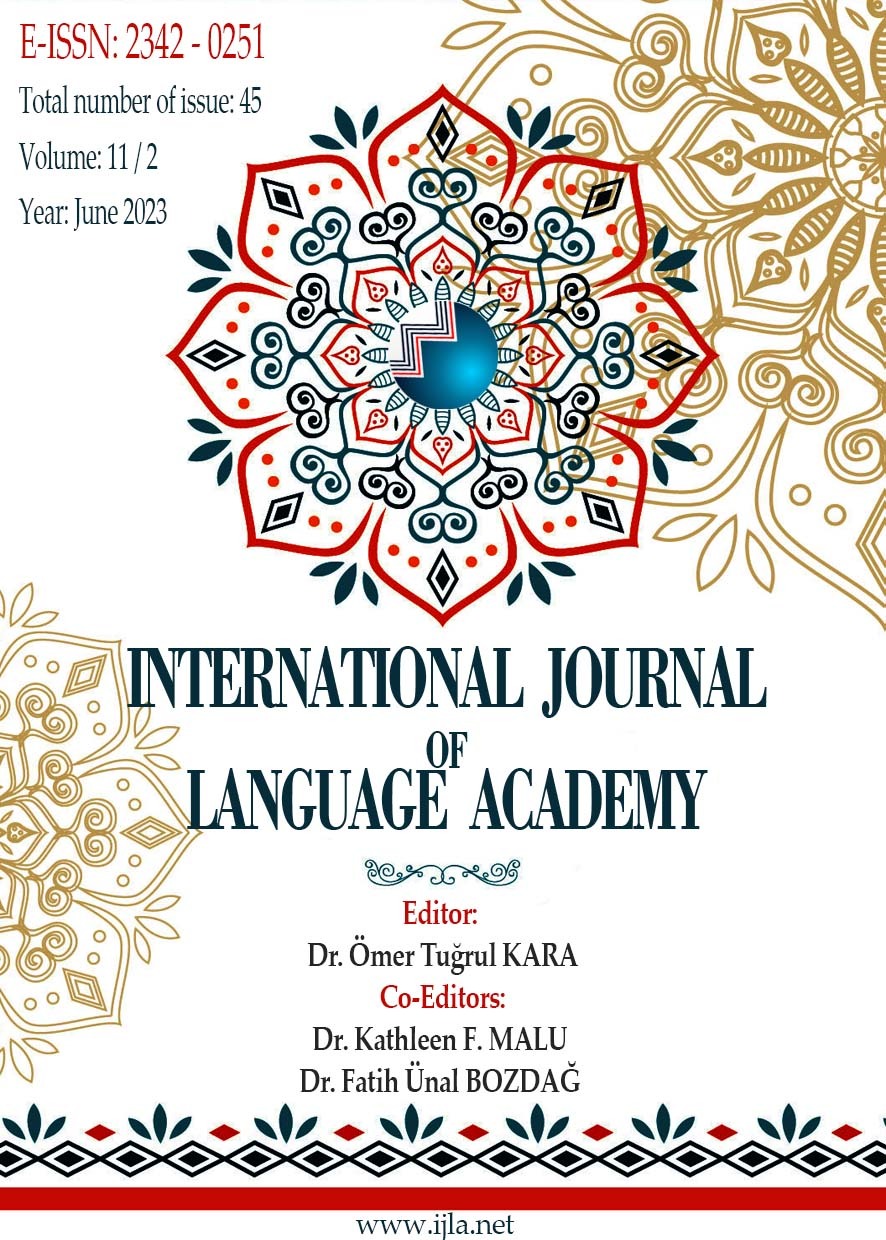Author :
Abstract
Herhangi bir dilde konuşan birinin bir olay ya da durum karşısında sergilediği tutum ve davranışına aynı şekilde psikolojik durumuna bağlı olarak cümlede belirtilen hareketin şekli kip olarak tanımlanmaktadır. Türkçede bu konu ile ilgili sınıflandırmalar mevcut ise de “haber” ve “tasarlama” gibi sınıflandırmalar konunun anlaşılmasını güçleştirmektedir. Hâlbuki konuşanın ürettiği cümleye kattığı niyet, kasıt söz konusu iki sınıflandırmanın yetersiz kaldığını göstermektedir. Kip terimi dil bilgisel açıdan insan eylemlerini belli bir kalıba sokarak anlatımı kolaylaştırmak gibi temel bir işlevi yerine getirir. Bu işlevi yerine getirirken konuşanın cümleye niyetini, kastını eklemesi kipsellik kavramını doğurmaktadır. Türkçe dilbilgisi kitaplarında kip belirsiz bir olgu olarak kalmış, bunun sonucu olarak kipin zaman ve görünüş kategorileriyle olan farkı tam olarak açıklığa kavuşturulamamıştır. İnsan eylemlerinin cümle içinde belli yapıya sokulması bu cümlenin konuşanının ve cümleyi dinleyenin arasındaki bildirişimin sağlıklı ve tam olması için yeterli olmamakta ve anlam da işin içine dâhil olmaktadır. Anlamın işin içine girmesini sadece kip kavramı ile açıklamak yetersiz olacaktır. Bu bağlamda kip kadar kiplik denilen ve anlamlandırma sürecinin tarzı için belirleyici olan bir alan daha değerlendirmeye girmektedir. Söz konusu bu alanın incelenmesini Almanca karşılığı ile işlemek her iki dilin özelliklerini karşılaştırarak vermek kip ve kipsellik konusuna daha fazla bir açıklık getirecektir. Bu düşünce ile bu çalışmada kip ve kiplik kavramlarına yer verilmiş, bu kavramlar arasındaki ilişki değerlendirilmiştir. Söz konusu kavramların Alman dilindeki karşılıkları verilmiştir.
Keywords
Abstract
Depending on the attitude and behavior of a person speaking in any language in the face of an event or situation, as well as his psychological state, the form of the movement specified in the sentence is defined as the “mode”. Although there are classifications related to this subject in Turkish, classifications such as "news" and "design" make it difficult to understand the subject. However, the intention that the speaker adds to the sentence he/she produces shows that the two classifications in question are insufficient. The term modality fulfills the basic function of facilitating the expression by putting human actions into a certain pattern in terms of grammar. While performing this function, the speaker's adding his/her intention to the sentence creates the concept of modality. In Turkish grammar books, mode remained as an ambiguous phenomenon, and as a result, the difference between mode and tense and aspect categories could not be fully clarified. Putting human actions into a certain structure in a sentence is not enough for the communication between the speaker of this sentence and the listener to be healthy and complete, and the meaning is also involved. It will be inadequate to explain the involvement of meaning only with the concept of modality. In this context, another field called modality as well as mode, which is decisive for the style of the signification process, enters into evaluation. Examination of this field in question with its German equivalent and comparing the features of both languages will bring more clarity to the subject of mode and modality. With this idea, the concepts of mode and modality are included in this study, and the relationship between these concepts is evaluated. German equivalents of these concepts in question are given.





